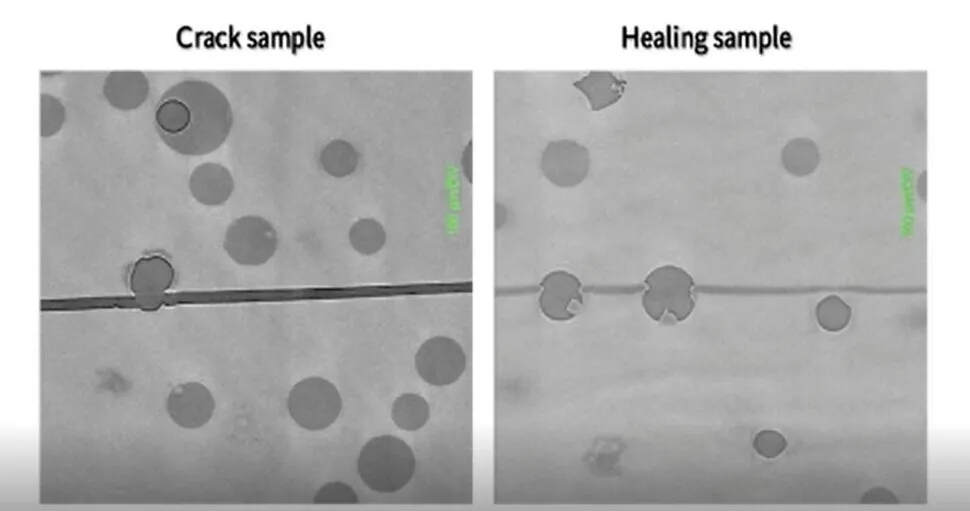By TF2 Smartphone Solutions
Picture this: You accidentally drop your smartphone, and instead of wincing at the inevitable spider web of cracks across your screen, you simply wait 20 minutes and watch as the damage mysteriously disappears. This isn’t science fiction—it’s the groundbreaking reality that South Korean researchers have brought to life.
A Breakthrough Born from Nature’s Wisdom
Engineers at the Korea Institute of Science and Technology (KIST) and Yonsei University have achieved what many thought impossible: creating a smartphone screen material that literally heals itself when damaged. Their secret weapon? An unlikely hero from the art world—linseed oil, the same natural extract used to preserve precious paintings.
The revolutionary material, called colourless polyimide (CPI), combines the transparency of glass with remarkable durability. What makes this discovery truly exceptional is that it can withstand thousands of folds without losing its clarity or strength, making it perfect for the next generation of foldable devices.
The Science Behind the Magic
The breakthrough lies in the ingenious use of linseed oil-filled microcapsules embedded within the screen material. When your phone screen cracks, these microscopic capsules burst open, releasing the oil into the damaged area. Unlike other healing materials that require high heat to activate, linseed oil hardens naturally at room temperature—a property that makes it invaluable for art preservation and now, smartphone repair.
The process is remarkably efficient: the oil flows into cracks and hardens within minutes, creating a seal that restores the screen’s integrity. The researchers report that their system can repair an impressive 95% of damage in just 20 minutes, without any external heat or intervention required.
Beyond Previous Limitations
What sets this innovation apart from earlier attempts is its practical applicability. Previous self-healing materials suffered from significant drawbacks—they either required high temperatures to activate (impractical for consumer electronics) or only worked on soft, flexible materials. The Korean team’s CPI coating works on hard surfaces and functions at room temperature, making it commercially viable for everyday devices.
The material also demonstrates superior performance when exposed to humidity and UV light, two common environmental factors that typically degrade electronic components over time.
A Game-Changer for Multiple Industries
While smartphone users will be the most immediate beneficiaries, the applications extend far beyond mobile devices. The aerospace industry and solar cell manufacturers already use colorless polyimide in their products, and this self-healing variant could revolutionize maintenance and longevity across these sectors.
The technology promises to eliminate the frustration and expense of screen repairs—a multi-billion dollar industry built on our collective clumsiness. No more choosing between living with a cracked screen or paying hefty repair bills.
The Road Ahead
As this technology moves from laboratory to marketplace, it represents more than just a convenient feature—it’s a glimpse into a future where our devices become more resilient and sustainable. The ability to self-repair reduces electronic waste and extends product lifecycles, aligning with growing environmental consciousness.
The researchers emphasize the broader significance of their work: developing materials that can “radically solve the physical properties and lifespan of damaged polymer materials.” This breakthrough opens doors to applications in flexible displays, electronic devices, and beyond.
Conclusion
The marriage of ancient natural materials with cutting-edge nanotechnology has produced something truly remarkable. As we move toward an era of increasingly sophisticated and expensive mobile devices, self-healing screens represent not just technological progress, but a fundamental shift in how we think about device durability and maintenance.
The days of protective cases and screen protectors may soon be numbered. Instead, we’re entering an age where our devices possess an almost biological ability to heal themselves—a fitting evolution for technology that has become so integral to our daily lives.
This breakthrough research was published in Composite Part B: Engineering and represents a collaborative effort between the Korea Institute of Science and Technology (KIST) and Yonsei University.
Summary
South Korean researchers have developed a revolutionary self-healing smartphone screen material that can repair 95% of damage in just 20 minutes using linseed oil microcapsules. This breakthrough colorless polyimide (CPI) technology works at room temperature, requires no external intervention, and could eliminate the need for expensive screen repairs while extending device lifespans across multiple industries.
Comments Section
What do you think about this self-healing screen technology? Share your thoughts below!
💬 Leave a Comment:
- Are you excited about self-healing screens or sceptical about the technology?
- How much would you pay for a phone with this feature?
- Do you think this will make screen protectors obsolete?
- What other self-healing technologies would you like to see in smartphones?
Discussion Guidelines:
- Keep comments respectful and on-topic
- Share your personal experiences with cracked screens
- Feel free to ask technical questions about the technology
- Let us know if you’d like to see more coverage of emerging smartphone innovations
Connect with TF2 Smartphone Solutions:
- Follow us for the latest smartphone technology news
- Subscribe for in-depth analysis of mobile innovations
- Contact us with story suggestions or technical questions
Comments are moderated to ensure quality discussion. Please allow time for your comment to appear.








